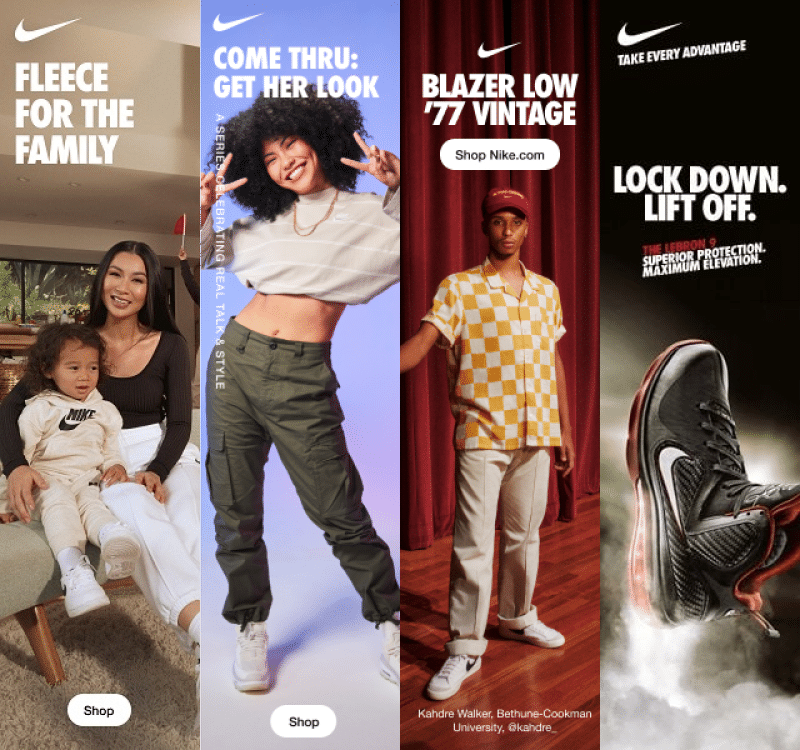How well do you know your audience?
This question is actually never possible to fully answer, no matter how long you’ve been in business. Not to get too philosophical (we’re more about action than contemplation around here), but it’s good to ask yourself this pretty regularly.
You know this: our world never stops changing and evolving. This includes everything from the platforms and technologies available to us at a macro level, to what’s on your playlist as you read this article. We live in a time of flux and change, and so do our customers. So as your business and brand evolves, never get complacent when it comes to knowing who your customer is.
Why define a target audience
This is one of the big differences between running a real business, and just chasing a hobby. Once you get serious about scaling your business into something full-fledged, focusing your time and attention becomes critical. A dedicated business banking account helps strengthen your financial foundation as your audience grows.
This starts with defining who it is you’re serving in the first place. In other words, defining a target audience helps to:
- Attract people more likely to become customers
- Spend marketing and advertising dollars more effectively
- Build a stronger brand voice that sets you apart
- Get more creative with your marketing
- Develop a relationship with a core audience that offers you better feedback, creates deeper bonds, and lays the groundwork for community growth
Target market vs target audience
These terms sound the same. Yet understanding the difference can open up doors for your business, in many ways. It can have implications not only for your marketing strategy, but also for your product development and brand.
Your target market is the full set of end consumers who could become customers of your brand. Your target audiences are the people you focus on in advertising, based on a set of common characteristics. These are also referred to as “segments”. Your target market is who your brand must appeal to on a universal level, and your target audiences are like chunks of that audience that you reach through specific marketing channels and campaigns.
Let’s look at an example.
Nike’s target market is famously defined within their mission statement as “every athlete” – which they define as anyone with a body. So, a pretty broad group of people. When you have a global $3B marketing budget, you can afford to go after every person with a body. But even a global leader needs to break down their market into specific audiences, and you can see on their website this is split between men, women and children. Breaking it down further, their products are organized by sport and occasion. Runners, basketball players and general fitness seekers are targeted with different messaging, in different places, for different products.
Nike’s Target Audiences
- Men
- Women
- Parents
- Players of specific sports
- Fashion-oriented
- Performance-driven
- Cost-conscious
Below are some examples of this in action. Notice how each ad is targeting a unique audience through its messaging and imagery.
Fashion-savvy women:
Cost-conscious consumers:
A range of audiences are included, from parents to serious athletes:
It’s best to start big and identify the broadest definition of someone who could be interested in your product or service. From here, you can sharpen the definition to go after a particular subset.
Common ways to define a target audience
There are many different ways to slice and dice an audience, and these may shift over time. Below are some of the major categories to consider when thinking about how to expand your target audience definitions.
Demographics – Age, location, marital status, household income, children, gender and occupation are some of the most basic ways to define an audience. It’s good to start with a general understanding of your audience in these terms, but some are more important than others depending on your brand. It can also be tricky when lumping people together in this way, depending on the product or service. For example, millennials and GenZ make up over 50% of the US population, so are an attractive audience for many brands. Yet, they’re also the most diverse population in US history, which means their belief systems, attitudes and behaviors are not one-dimensional. For example, ideas and norms around gender are shifting and expanding, which require a different way of thinking about how to cater to a male versus female audience. Demographic information is useful, but it’s not enough to paint a full picture of your future customers.
Psychographics – Here’s where things get a bit more interesting. Thinking about the psychological situation and needs of your audience puts things into a much more useful frame, especially in terms of product development and marketing. This requires having a sense of empathy for your audience and their mental state. Are they worried or anxious about something? Or are they seeking adventure and novelty?
Interests – This may seem obvious to some, but knowing the interests of your audience (beyond your product or service) can yield useful insights, especially around marketing placement and messaging. For example, Red Bull targets those interested in adventure and adrenaline-fueled activities which is why it sponsors athletes and Formula 1 teams.
Behavioral – Behavioral targeting looks at specific actions taken by an online audience, to determine what ads and messaging will be the most effective. For example, you can target people who have visited your website with an ad on Instagram reminding them about your product or service. That’s known as behavior-based targeting; it has nothing to do with who they are beyond the fact that they indicated an interest by visiting your site.
Media – Some brands focus their energy on understanding how their audience spends their time consuming media. For example, if you’ve focused until now on Instagram and Twitter, but your audience spends a lot of time on YouTube or TikTok, this could be an opportunity for you to tap into a new segment and attract a new source of traffic.
Pulling this together, here’s how a brand like Nike might segment its target audiences:
Each of these groups would be researched and analyzed to determine the size of the opportunity, their motivations and pain points, their media habits (to understand where/how to reach them) and how this impacts creative messaging.
Nike can afford to spread its marketing budget across many different audiences, over a long period of time. But now let’s shift our focus and think of how an independent business owner can identify target audiences to make better marketing decisions.
How to identify your target audiences
Now that you know some of the ways you can describe your audience, let’s look at how to figure out who these people are.
- Write down what you already know! Odds are you have a good sense of who a typical customer for your business could be. Perhaps you were inspired to start your business based on this knowledge – you discovered a particular unmet need and went after it. But have you taken the time to focus on who they are as people, not just “customers”? This is a useful exercise for even the most experienced business owners. Using the above categories, see how much you can write about your audience as if you were describing them for the first time.
- Google Analytics. Assuming you have a website for your business, there’s a world of insight to gain from Google Analytics. Seeing where your customers are coming from can tell you something about their interests and where they spend their time online. Do they visit you from YouTube or other social platforms? Are they on mobile devices or do they visit from a desktop computer? What pages do they spend the most time looking at? All of these are clues that help you understand who your audience is, and how to best communicate with them.
- Social media followers and comments. Have you spent time looking at who is already following you online? Browse through some of the profiles of your more active followers, and get familiar with what makes them tick. What do these people seem to have in common? Are there any common interests or pain points you may have missed? Taking time to regularly review your social media engagement is critical to scaling a business. For more information on social media marketing, check out our blog post on the topic.
- Social media analytics. Facebook, Instagram and Twitter all have what’s called “native analytics” right inside the platforms themselves. There can be a treasure trove of information about the demographics and interests of your visitors, sitting right there waiting for you. Social media data is particularly useful because you can quickly see what’s resonating based on engagement.
- Reviews and ratings. If you’re already in business and have garnered a few reviews on sites like Google Business or Yelp, be sure to read what past customers have said about you. Hopefully, it’s only good things — but either way these comments can reveal hidden nuggets and insights into what people value the most, or would like to see more of.
- Customer interviews. No better place to go than the source. Ask your existing customers who they are, how old they are, what they’re interested in and where they spend the most time online. This can be done by sending out surveys via email, or just taking a poll on social media.
- Competitor research. Visit the websites and social profiles of your competition, and try to see who they’re going after. Often you can see what segments are most important simply by looking at the menu, or reading a few blog posts. On social, check out their followers and look at their bios for common traits.
Tips for defining your target audience
Once you’ve performed market research and gained insights around the different possibilities for defining your target audience, it’s time to find them! Social media is a good place to start because it’s where your audience probably already is, it’s relatively easy to get set up with an ad account, and you get feedback pretty quickly.
- Think of it as an investment. Spending money on a target audience is a defining moment for any small business owner. It’s about making a commitment to the long term, by placing some money on the table in order to learn more about your audience and use those insights to scale your business. Organizing that spend through accounting tools also makes it easier to track ROI and adjust your strategy.
- Pick one channel to start. You don’t need to be everywhere at once, and you also don’t need to force people to change their media habits. In other words, where is your audience already spending their time online? Instagram is a good place to start for most audiences, and it’s relatively easy to set up campaigns.
- Have a “test-and-learn” mentality. This will make all the difference in the world. You don’t need to know everything about your audience from the get-go. But the sooner you start promoting your business, the sooner you’ll get familiar with them and the more comfortable you’ll be with describing who they are.
- Set a testing budget. It can help to create a designated budget just for target audience testing! Say the first month or two you are focused purely on understanding who your audience is, based on what ads work better than others. From there, you can adjust. While it’s possible to run campaigns for $10/day, they likely won’t be shown to enough people to generate any interesting results, and you won’t get much data from which to draw any real conclusions. Start with at least a week-long campaign, if not a month, bearing in mind that it’s an investment in your business.
- Create personas. A “persona” is a fictional profile meant to represent your target audiences. It’s a great way to humanize your audience by assigning them a name and a brief description of their story or situation as it relates to your business. For instance, if you’re a nutritionist you might have a persona for someone who is overweight and interested in weight loss, and another for someone in good shape but looking to simplify their diet. Giving them names and personalities creates a stronger connection to who they are as people – not just random internet users. This builds empathy and can be a great tool for understanding an audience.
- Figure out who your audience is NOT. This can be just as important as identifying who they are, and a good way to do this is through testing. You can also get a general feel for this the longer you’re in business – and make a note of it. Knowing who you are not interested in can illuminate new ways to think about who you are going after!
- Don’t go overboard with segmentation. Especially as a small business owner, you can easily drive yourself nuts isolating every aspect of your potential target audience. This often leads to an unwieldy volume of creative options, test campaigns, and budget. Start small, identify two or three segments, and focus on attracting as many of those people as possible through relevant messaging and ad placements.
Identifying your target audience with clarity is one of the most important steps in building sustainable business growth. Start at a high level, defining the lowest possible denominator is – regardless of which marketing channel and targeting options. Tracking those investments with the right tax and expense management tools also helps you maintain a healthier bottom line as your business expands.
If you take away one key point from this article, it’s this: the more empathy you have for your audience as people (vs. target consumers) the better your marketing will be.







